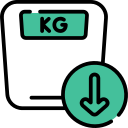Q. Why is intubation necessary for general anesthesia?
Doctor Answer is medically reviewed by SecondMedic medical review team.
Intubation is a necessary part of the procedure for general anesthesia because it ensures that oxygen and inhaled anesthetic gases are properly delivered to the patient’s lungs. Additionally, intubation aids in preventing stomach contents from entering the lungs, which can cause severe respiratory issues. During intubation, a tube is inserted down into the patient’s throat where it then connects to a ventilator machine or bag-valve mask. The ventilation machine assists in controlling respiration by supplying oxygen and removing carbon dioxide from the patient’s lungs while they are under general anesthesia.
The insertion of an endotracheal tube (ETT) during general anesthesia helps maintain an open airway allowing for better delivery of oxygen and drugs; provides protection against aspiration of gastric contents; reduces resistance to air circulation; stabilizes intrathoracic pressure during deep lung breaths; helps facilitate mechanical ventilation should it become necessary; allows direct visualization of vocal cords if needed; and improves efficiency during laryngoscopy due to its stiffer walled construction compared with other types of airways such as face masks or nasal prongs.
Using an ETT also allows for easy administration sedative agents, local anaesthetics, narcotics as well as medications used prior to surgery such as opioids or preoperative medication commonly seen before elective procedures such as vasectomies or minor surgeries like carpal tunnel release surgery. Additionally intubating with an ETT enables clinicians to control various parameters including tidal volumes (amount of breath per minute), adjusted fraction concentration (the amount/concentrationof inspired gas mixture flowing through anathesia breathed in by patients), inspiratory time (lengthof time each breath lasts) , respiratory rate (number of breaths taken perminutes) among others all aiding in providing optimal care at any given point during surgical procedures under GA. All this makes intubernation absolutely essential for safe practiice when performing general anaesthesia on patients
Related Questions
-
Cardiology Heart disease What are the risks of having a heart mu
-
What advancements and innovations have been made in pacemaker technology in recent years? | Secondmedic
-
Cardiology Heart disease Is angioplasty? safe? Does it have any
-
Cardiology Heart disease Can Angina be seen on ECG?
-
Can lifestyle changes, such as exercise or diet modifications, help prevent or reduce the frequency of shortness of breath? | Secondmedic











